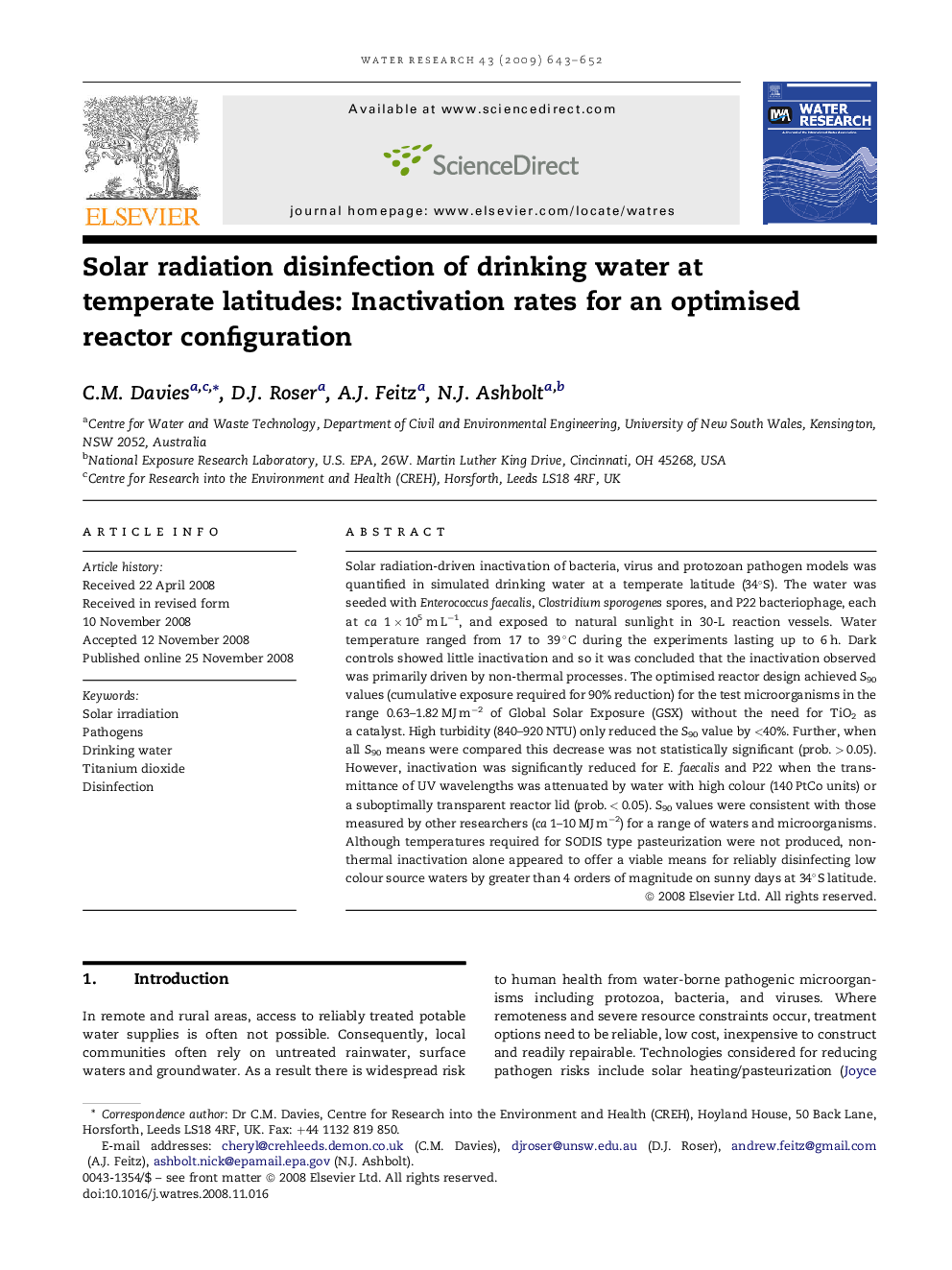| Article ID | Journal | Published Year | Pages | File Type |
|---|---|---|---|---|
| 4485280 | Water Research | 2009 | 10 Pages |
Solar radiation-driven inactivation of bacteria, virus and protozoan pathogen models was quantified in simulated drinking water at a temperate latitude (34°S). The water was seeded with Enterococcus faecalis, Clostridium sporogenes spores, and P22 bacteriophage, each at ca 1 × 105 m L−1, and exposed to natural sunlight in 30-L reaction vessels. Water temperature ranged from 17 to 39 °C during the experiments lasting up to 6 h. Dark controls showed little inactivation and so it was concluded that the inactivation observed was primarily driven by non-thermal processes. The optimised reactor design achieved S90 values (cumulative exposure required for 90% reduction) for the test microorganisms in the range 0.63–1.82 MJ m−2 of Global Solar Exposure (GSX) without the need for TiO2 as a catalyst. High turbidity (840–920 NTU) only reduced the S90 value by <40%. Further, when all S90 means were compared this decrease was not statistically significant (prob. > 0.05). However, inactivation was significantly reduced for E. faecalis and P22 when the transmittance of UV wavelengths was attenuated by water with high colour (140 PtCo units) or a suboptimally transparent reactor lid (prob. < 0.05). S90 values were consistent with those measured by other researchers (ca 1–10 MJ m−2) for a range of waters and microorganisms. Although temperatures required for SODIS type pasteurization were not produced, non-thermal inactivation alone appeared to offer a viable means for reliably disinfecting low colour source waters by greater than 4 orders of magnitude on sunny days at 34°S latitude.
